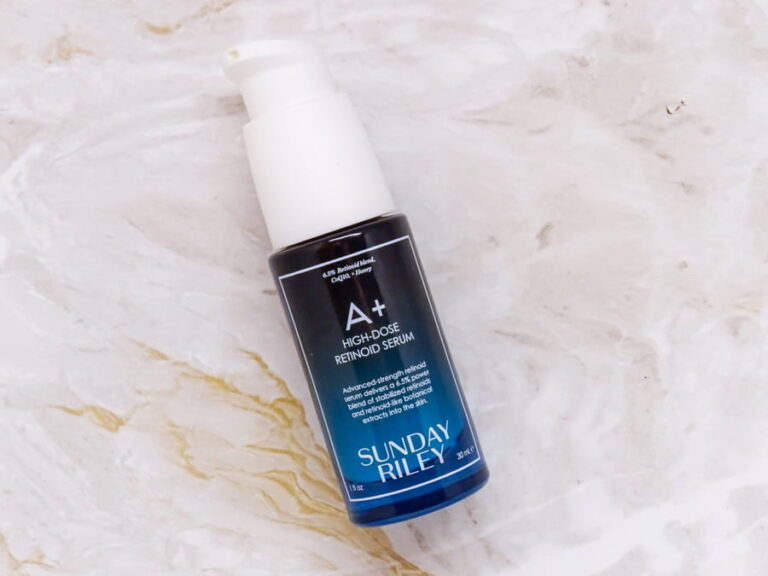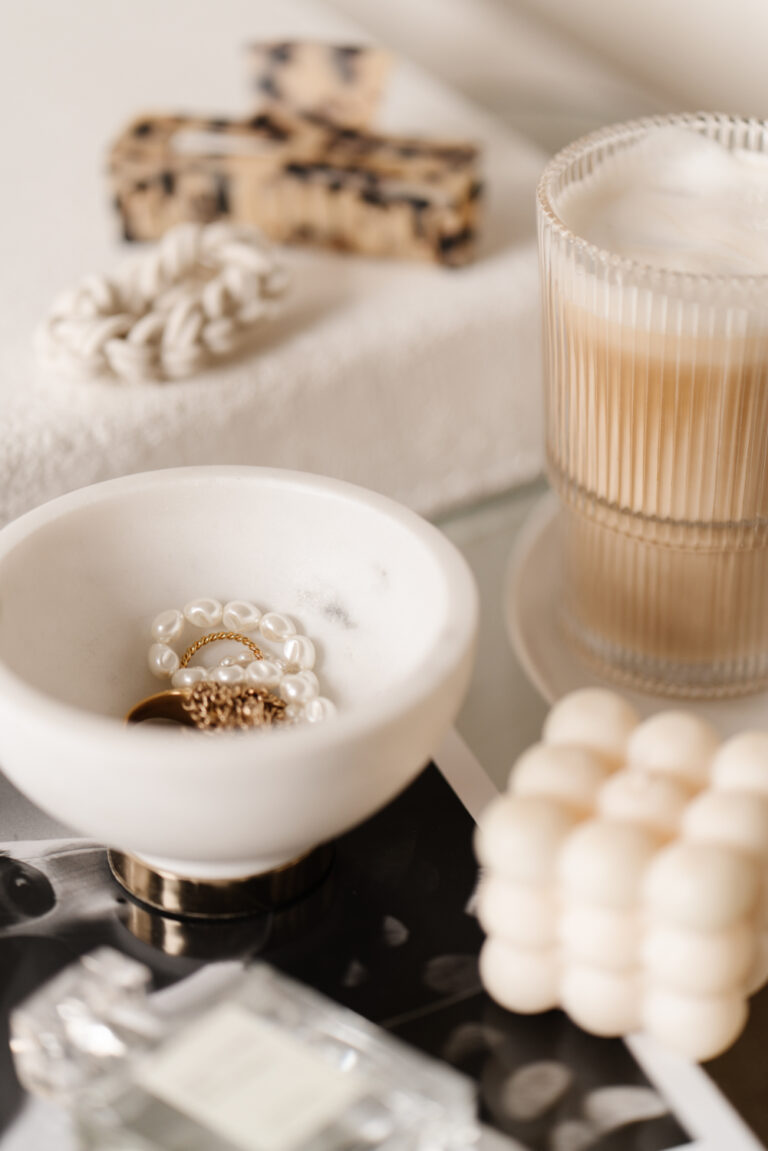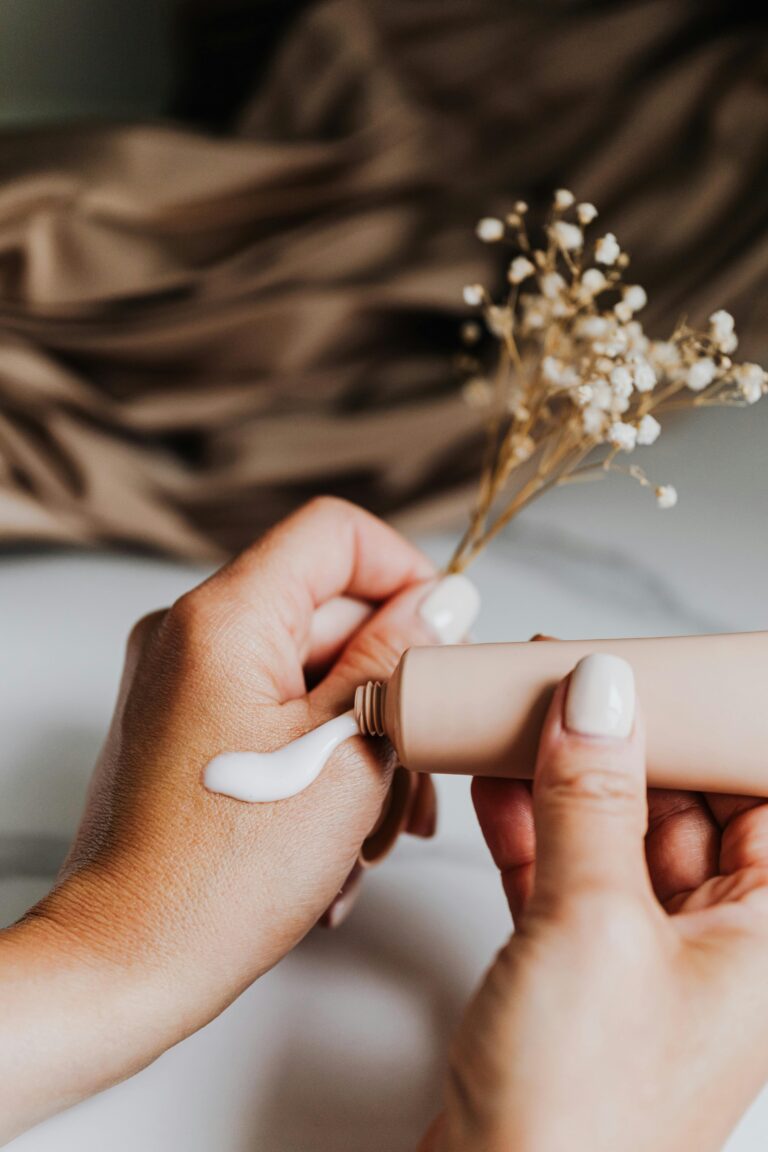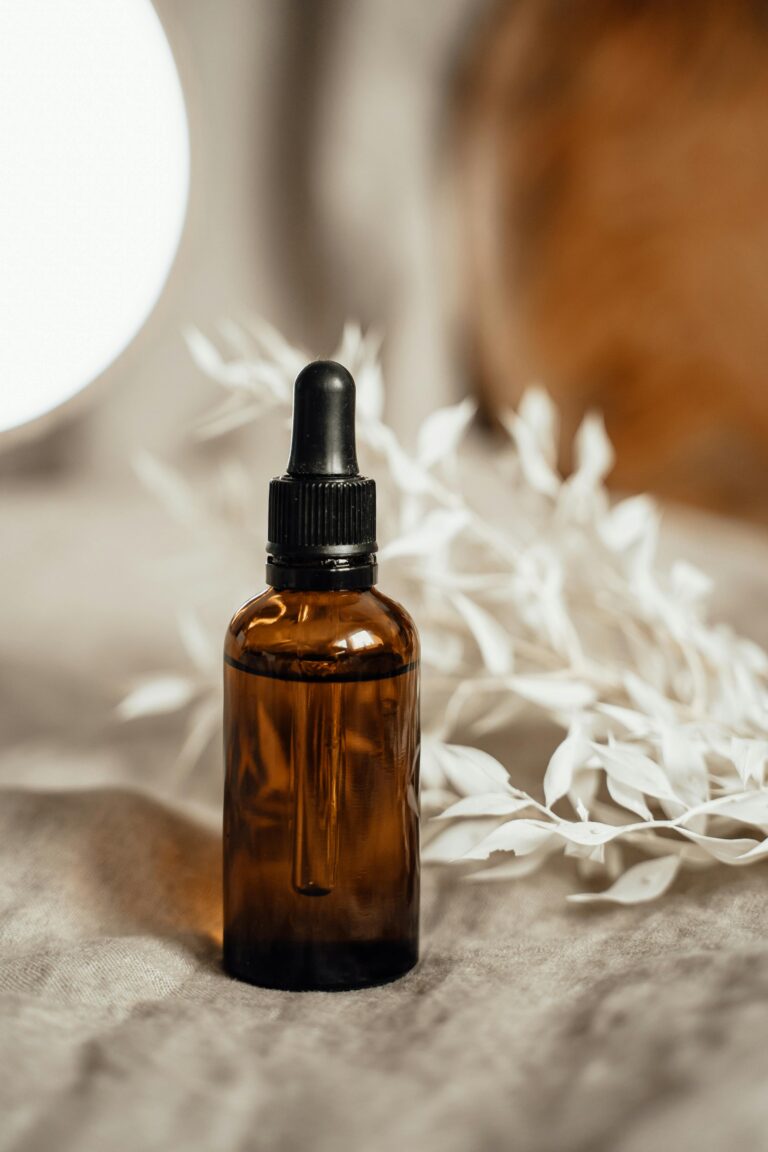Lactic Acid And Retinol: Hailed For Their Active Ingredients
Lactic acid and retinol are two buzzwords you’ve probably come across in your skincare research. They’re hailed as some of the best active ingredients for skin rejuvenation, but what exactly do they do?
Better yet, how can you effectively incorporate them into your skincare routine without causing unnecessary irritation?
Let’s start with lactic acid, a type of alpha-hydroxy acid (AHA) that works wonders for exfoliating the skin. It’s derived from sour milk and is famous for its ability to slough off dead cells, revealing brighter, fresher skin underneath.
But don’t let the term “acid” scare you off! Lactic acid is actually quite gentle on the skin compared to other AHAs.
On the flip side, we have retinol – a form of vitamin A well-known for its anti-aging properties. It’s considered a gold standard ingredient in fighting wrinkles and boosting collagen production.
What sets retinol apart is its proven ability to speed up cell turnover, helping your skin stay youthful and radiant.
But here’s the million-dollar question: How do you safely use lactic acid and retinol together? Keep reading to find out!
Understanding Lactic Acid: A Deep Dive
Diving into the world of skincare, you’ll often hear about lactic acid. But what really is this ingredient?
Simply put, lactic acid is an alpha hydroxy acid (AHA) derived from fermented milk used as a chemical exfoliator. Its big molecular size prevents it from penetrating deep into the skin.
This makes it gentler than other AHAs and more suitable for sensitive skin. Lactic acid is also the only AHA that acts as a humectant, retaining moisture and providing hydration.
Confused about exfoliation? Don’t fret! When we talk about exfoliation with lactic acid, we refer to the process of effectively breaking down the bonds between dead skin cells on your skin’s surface.
This not only helps to reveal fresh, new skin underneath but also improves your overall complexion. But what else does this impressive acid do?

The Benefits Of Lactic Acid For Your Skin
- Exfoliation: Lactic acid gently dissolves dead skin cells, unclogging pores and reducing the appearance of blemishes, acne scars, and hyperpigmentation.
- Hydration: This AHA has humectant properties, drawing moisture into the skin and improving its hydration levels, resulting in a plumper and more supple complexion.
- Brightens Complexion: By removing dull and dead skin cells, lactic acid promotes a brighter and more even skin tone, leaving you with a radiant glow.
- Rejuvenates Aging Skin: Lactic acid also promotes collagen production in your dermis – the thick layer of living tissue below your outer skin layer or epidermis. By stimulating collagen synthesis, it helps to strengthen your skin structure and reduce the appearance of fine lines and wrinkles.
- Enhances Product Absorption: The exfoliating properties of lactic acid allow other skincare products to penetrate deeper into the skin, maximizing their effectiveness.
To sum up, here are the incredible benefits of lactic acid:
| Lactic Acid Benefits |
| Exfoliates the skin Retains moisture |
| Promotes cell turnover |
| Boosts collagen production |
| Brightens complexion |
How To Use Lactic Acid
Now that you have become an expert on all things lactic acid, more questions arise. When should you use lactic acid? And how?
The power of lactic acid depends on how much of it is in the product. Higher concentrations are more potent, so use them carefully! Only use the stronger ones once or twice a week to avoid irritation.
On the other hand, lower concentrations are milder and can be used more often, even daily, for gentle exfoliation. Pay attention to how your skin reacts and adjust how often you use it accordingly.
Applying a lactic acid-infused serum or cream once daily during their nighttime routine works best for most people.
Remember though: It’s always good practice to do a patch test before incorporating new ingredients into your regimen!
Retinol Uncovered: The Essential Facts
Retinol is a true powerhouse in the world of skincare. You’ve probably heard its name thrown about, but do you really understand what it does for your skin? Let’s dive in and uncover the essential facts about this popular ingredient.
Firstly, retinol is a derivative of vitamin A, one of the body’s key nutrients for boosting cell turnover. It’s widely recognized for its age-defying properties. So, if you’re looking to reduce fine lines and wrinkles, retinol could be your new best friend.
When applied topically, this miraculous substance helps to speed up skin renewal. Your old cells are replaced with new ones at a faster rate, leading to an improved texture and tone. But remember that patience is crucial; it can take several weeks before seeing noticeable results.
The Benefits Of Retinol For Your Skin
Want to find out why retinol is often celebrated as one of the most effective components when it comes to fighting the signs of aging? Here is a list of what retinol can do for your skin:
- Speeds up cell turnover: Retinol has the remarkable ability to accelerate the rate at which your skin cells renew themselves. This means that older, dull skin cells are shed more quickly, allowing fresh and youthful cells to surface. By increasing cell turnover, retinol can help your skin appear brighter, smoother, and more vibrant.
- Stimulates collagen production: Collagen is a protein that provides structure and elasticity to your skin. As we age, our natural collagen production slows down, leading to the development of fine lines, wrinkles, and sagging skin. Retinol has been scientifically proven to stimulate collagen production, helping to restore firmness and elasticity to your skin. This can lead to a reduction in the appearance of wrinkles and fine lines, making your skin look more youthful.
- Improves skin tone: Retinol’s ability to reduce the overproduction of melanin helps fade hyperpigmentation and dark spots, contributing to a more even skin tone. By addressing areas of discoloration, retinol can promote a smoother and more uniform complexion.
- Improves skin texture: Through its collagen-boosting and cell turnover-enhancing effects, retinol improves the overall texture of your skin. As it encourages the removal of rough and uneven skin, retinol leaves you with a smoother and softer surface, making your skin feel more supple and look more radiant.
- Reduces the appearance of aging: Retinol’s multi-faceted approach to addressing aging concerns, including fine lines, wrinkles, and uneven skin tone, results in a reduction of visible signs of aging. By promoting collagen synthesis and improving cell turnover, retinol diminishes fine lines and wrinkles, creating a more youthful and revitalized complexion. Its skin-brightening properties also contribute to a more radiant and youthful appearance.
- It has antioxidant properties: Retinol also has antioxidant properties, which means it can help protect your skin from damage caused by free radicals and environmental factors like UV radiation and pollution.
It’s important to note that retinol can be quite potent, and some people may experience initial skin irritation or sensitivity when they first start using it.
Therefore, it’s recommended to introduce retinol into your skincare routine gradually and to use it in conjunction with a moisturizer to minimize any potential side effects.
To sum up, here are the remarkable benefits of retinol:
| Retinol Benefits |
| Boosts cell turnover |
| Fights aging signs |
| Improves uneven skin tone |
| Improves skin texture |
How To Use Retinol
Before we move on, let’s explore how to use this miracle ingredient the right way:
- Start Slowly: If you’re new to retinol, begin with a lower concentration to allow your skin to adjust. Start using it every other night or every third night, gradually increasing the frequency as your skin becomes more tolerant.
- Cleanse and Dry: Wash your face with a gentle cleanser and pat it dry before applying retinol. Avoid using products that may cause irritation or dryness alongside retinol.
- Pea-Sized Amount: Less is more with retinol! Only use a pea-sized amount for your entire face to avoid over-application and potential irritation.
- Nighttime Routine: Incorporate retinol into your nighttime routine, as it can make your skin more sensitive to the sun. This also gives it time to work its magic while you sleep.
- Moisturize: After applying retinol, follow up with a moisturizer to lock in hydration and minimize any occurring dryness.
- Sunscreen is a Must: Always, and I mean always, wear sunscreen during the day when using retinol. It makes your skin more sensitive to the sun, and protecting it is crucial.
- Be Patient: Results won’t happen overnight. Give retinol a few weeks to a few months to show its full potential. Consistency is key!
- Avoid Sensitive Areas: Keep retinol away from the corners of your eyes, nostrils, and lips to prevent unnecessary irritation.
Combining Lactic Acid And Retinol

Can You Use Lactic Acid With Retinol
Now the main question of this article imposes itself. Can you use lactic acid with retinol? And the answer is yes!
They actually make quite a powerful duo when used correctly. However, due to their potency, it’s important not to overdo it as this could cause irritation or sensitivity.
Common Misconceptions About Lactic Acid and Retinol
If you have ever searched bout these ingredients, you may have heard that you should ever combine them.
Let’s dive into some common misconceptions about lactic acid and retinol to clear some of the confusion surrounding them.
Firstly, you might’ve heard you can’t use lactic acid and retinol together. This isn’t entirely true. While it’s recommended to avoid using multiple active ingredients at the same time due to potential irritation, you can still incorporate both into your routine. The key is to use them correctly and at the right concentrations.
Another myth floating around is that lactic acid makes your skin more prone to sun damage. Yes, any AHA (Alpha Hydroxy Acid), like lactic acid, could increase photosensitivity, but only if you’re not wearing sunscreen. That’s why it’s crucial always to wear SPF during the day when using AHAs.
The third misconception has something to do with retinol causing your skin to thin. In reality, retinol actually thickens the skin by increasing cell turnover and promoting collagen production.
How To Combine Lactic Acid and Retinol
Before we dive right in on how to combine lactic acid and retinol, there are some things you should keep in mind.
Firstly, both lactic acid and retinol induce sun sensitivity, which can be avoided by using a high-SPF sunscreen.
Secondly, the potency of lactic acid and retinol varies depending on their concentration in the product. Different formulations may have different strengths.
Now, let’s explore three different ways to use lactic acid and retinol safely:
- Alternating Nights: To avoid overwhelming your skin, consider using lactic acid on one night and retinol on the following night. This allows each ingredient to work effectively without causing excessive irritation or sensitivity.
- Morning Lactic Acid, Nighttime Retinol: Another option is to use lactic acid in your morning skincare routine. Ensure you follow it up with a broad-spectrum sunscreen to shield your skin from UV rays throughout the day. Then, apply retinol in your nighttime routine to take advantage of its rejuvenating effects while you sleep.
- Lower Concentration Products: Opt for products that contain lactic acid and retinol in lower concentrations. These formulations are less potent and more gentle on the skin, allowing the two ingredients to be combined in the same nighttime routine.
Best Practical Tips For Using The Lactic Acid And Retinol Combo Safely
Here are some simple yet life-saving tips you should remember when combining lactic acid and retinol:
- Always do a patch test before incorporating new active ingredients into your routine.
- Try not to introduce both products at the same time: Let your skin gradually adjust to one before you bring in the second.
- Start slow, especially with retinol – begin once or twice a week, then gradually increase as tolerated.
- Don’t forget moisturizer! Both lactic acid and retinol can be drying, so seal in moisture with a good cream afterward.
- Don’t forget sun protection: These active ingredients can make your skin more sensitive to UV rays. ALWAYS wear sunscreen during the day!
- Listen To Your Skin. If signs of redness or sensitivity occur, give your skin a break. It might mean that combining both in your routine isn’t right for you.
- Be patient because lactic acid and retinol take time to show their full effects. Consistency is key, and it might take a few weeks to see visible improvements in your skin.
When used responsibly, combining lactic acid and retinol can be beneficial as part of an effective skincare routine.
Concluding Thoughts on the Power Duo: Lactic Acid and Retinol
You’ve now reached the finish line of our deep dive into lactic acid and retinol. Let’s recap what we’ve learned about these powerful skincare ingredients.
Lactic acid, a gentle alpha-hydroxy acid, works magic by exfoliating your skin to reveal a brighter complexion.
On the other hand, retinol, a form of vitamin A, has been hailed as an anti-aging champion for its ability to reduce fine lines and wrinkles.
Can you use them together? Absolutely! When used in moderation and with proper care, this power duo can supercharge your skincare routine.
Frequently Asked Questions






